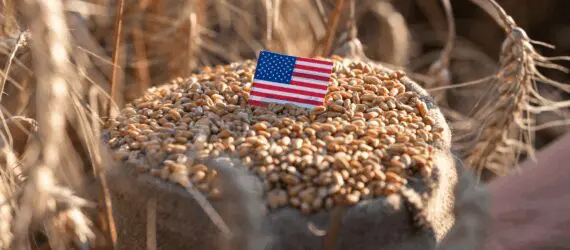By Michele Learner
When Bread for the World was founded in 1974, the proportion of people living with hunger was much higher than it is today. Bread members contributed to the progress over the years by faithfully championing humanitarian assistance and poverty-focused development assistance.
Famine, the most extreme hunger crisis, is an age-old enemy of humanity, but the world recently had a stretch of years free from famine. After the 1985 and 1992 famines in the Horn of Africa and the mid-1990s famine in North Korea, there were no famines declared for 15 years.
To be sure, people in many countries still urgently needed humanitarian assistance, chronic hunger remained, and contributing factors such as wars continued. But the worst-case scenarios were avoided.
Then came the Somalia famine of 2011, the unprecedented outbreak of several simultaneous famines in 2017, and the “perfect storm” of causes that led to today’s record numbers of people in need of life-saving assistance. In late January 2022, humanitarian agencies reported 20 “hunger hotspots” and tens of millions of people on the verge of famine.
This makes it more important than ever to improve the global response to hunger emergencies. One time-honored strategy is learning from experience. The truism that hindsight is 20-20 can lead to insights it would be hard to find elsewhere.
The best solution to famine will always be stopping it from happening in the first place. But no one can do everything that needs to be done, from ending longstanding wars and slowing climate change to ensuring equity regardless of race, gender, and religion. Tackling smaller parts of the problem has met with some success, but more could be done. The U.S. Agency for International Development (USAID) launched the Famine Early Warning Network, known as FEWS NET, after the devastating 1985 famine in Ethiopia. FEWS NET uses a wide range of information, from food prices to weather patterns, to determine whether and when hunger can be expected to rise dramatically. Its sophisticated analysis has proven highly accurate in projections even six months or longer into the future, and FEWS NET continues to refine its approach.
It is heartening that the world has tools that can provide advance warning of hunger crises. Other positive developments include families and villages finding ways to build their resilience, such as by developing additional sources of income. The global humanitarian community is improving its collective skills in some of the many and varied tasks essential to famine response—from quickly identifying children most urgently in need of help, to setting up emergency water filtration systems, to ensuring that vulnerable people such as elders and widows are not overlooked.
More could be done about another problem that carries enormous consequences: failure to act in time. An estimated 250,000 people died in Somalia’s 2011 famine, many of them young children. The death toll could have been reduced if the global community had responded sooner. FEWS NET had been warning of approaching famine for eight months before famine was declared in late July, 2011. This was also when U.N. humanitarian agencies issued their first formal appeal for funds and the first international aid flights arrived.
Famine broke out again in Somalia only three years later. In July 2014, the Africa Research Institute, noting that 2.9 million Somalis were in humanitarian crisis, asked, “Why are we back where we were?” Researchers said that in 2011, “it took 16 warnings from FEWS NET for the UN to declare a famine. In hindsight, everyone agreed that concerted humanitarian action should have taken place after warning three.” The article added that at the time of writing, July 14, 2014, there had been eight warnings from FEWS NET.
Another problem that demands action will probably sound familiar to Bread members: insufficient resources. Ensuring that U.S. policies and budgets reflect the nation’s values, which include preventing needless suffering and death from hunger, is a matter of political will. To be sure, it is not up to the United States alone to provide these resources, and our country is already the largest donor to several humanitarian assistance programs. But the United States, by setting an example, consistently mobilizes additional support from other donors.
For people who must worry every day about losing their children to malnutrition, the question is not whether the global community is generous. The questions are whether there will be enough to go around and whether it will arrive in time.
Michele Learner is managing editor, policy analysis, with Bread for the World.



